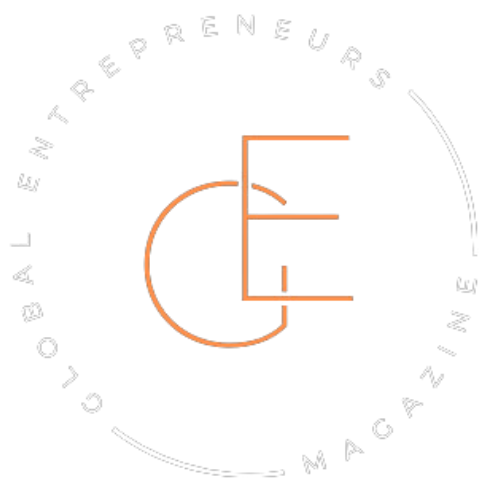It happens all the time.
A brand you’ve never heard of suddenly shows up everywhere. Not in traditional ads, not on billboards—but in your feed, in your group chats, in that one YouTube video that just hit a million views overnight. You click, half-curious, and somehow… you’re hooked. Weeks later, you realize you’re on a waitlist. Again.
What most people see is momentum. What they miss is the quiet strategy behind it.
Somewhere behind that sudden wave is a founder who didn’t gamble on luck or dump money into splashy ads. They built something real—but they also knew exactly how to get people talking about it. And not just any people—creators their audience actually trusts.
This isn’t about having a flashy influencer budget. It’s about knowing what tools to use, when to use them, and how to stay human in the process.
Tech-savvy founders don’t just adopt influencer marketing. They treat it like product development: iterative, intentional, and rooted in data. That’s what gives them the edge most brands can’t see—until they’re already too far behind.
The truth: tools matter — but only in the right hands
It’s easy to assume the tool is the magic.
You see platforms that promise influencer discovery, campaign tracking, content approvals, ROI measurement—all in one dashboard. Sounds like a shortcut. And for a lot of brands, that’s exactly how they treat it. Plug in a few filters, sort by follower count, send out a dozen briefs. Then hope for the best.
But that’s not how tech-savvy founders use these tools.
They approach them the same way they would a product analytics stack or a dev environment—something to test, tweak, and build on. They don’t treat influencer marketing tools like vending machines. They treat them like microscopes. They’re not looking for instant wins. They’re looking for patterns, outliers, and signals they can work with.
This is the mindset shift that changes everything: the tool isn’t the strategy. It’s just a way to sharpen it.
When you treat the platform as the solution, you miss the point. But when you treat it as part of a larger system—one built on curiosity, iteration, and real audience insight—you get results that actually stick.
They don’t chase names — they track patterns
Big names grab attention. But attention doesn’t always convert.
The smartest founders figured this out early. Instead of blowing budgets on creators with inflated reach, they started looking closer. Not at the follower count, but at the comments. Not at likes, but at consistency. They used tools to trace engagement patterns—who was growing fast, whose audience actually responded, who was driving clicks without even trying.
It’s how one founder found their best-performing partner: a mid-sized creator with a loyal following in a niche forum, not even on Instagram. The campaign cost a fraction of what a “macro-influencer” quoted—and sold out a full run in days.
This is the part many overlook. It’s not about grabbing the loudest voice. It’s about finding the right signal in the noise. And that requires more than a quick search. It requires curiosity, observation, and the patience to dig.
Tools make the digging easier. But it’s the founder who knows what to look for that gets the gold.
They automate the grunt work, not the connection
The behind-the-scenes of influencer campaigns can be a mess—tracking deadlines, reviewing drafts, handling payments, chasing down links. It adds up fast. Founders who understand scale don’t waste time on it. They use tools to handle the chaos: contract templates, automated follow-ups, performance dashboards.
But there’s a line they won’t cross.
What they don’t outsource is the human part. The DM that feels like it came from a real person. The email that references an old post instead of sounding like a copied pitch. The small details that make a creator feel like a collaborator, not a line item.
It’s a mix of automation and attention. One keeps the machine running. The other keeps the relationship real.
Plenty of brands get this backwards. They put effort into the tracking and let the outreach go cold and generic. Then wonder why the results feel flat. The founders who win are the ones who keep the connection at the center—even when everything else scales.
Data drives the decision — but gut filters the noise

Tech-savvy founders don’t guess. They watch. They track how a creator’s content performs, who’s engaging, when the spikes happen, and what kind of message actually moves people. They rely on numbers—but they don’t get blinded by them.
The tools might suggest a perfect match based on audience overlap or engagement rates. But sometimes the vibe is off. The tone doesn’t fit. The storytelling feels forced. And that’s when instinct kicks in.
One founder we spoke to skipped a creator who checked every box on paper. Instead, they went with someone newer, someone who didn’t have a polished media kit—but had a way of talking to their audience that felt raw and unfiltered. That campaign ended up bringing in three times the traffic.
You can’t program intuition. But you can train it.
That’s what separates the tool-users from the tacticians. They let data narrow the field—but when it’s time to choose, they trust their read of the room.
They treat influencers like collaborators, not ads
There’s a difference between hiring a creator and working with one.
Founders who get results don’t hand over a rigid script and expect magic. They share context, not commands. They talk about why the product exists, what problem it solves, and where it fits in people’s lives. Then they give creators the space to make that story their own.
They use tools to spot alignment—not just audience size, but tone, values, and creative style. When the fit is right, the content feels natural. Not forced. Not transactional.
One founder sent a creator a prototype and simply asked, “How would you talk about this if you discovered it on your own?” That post outperformed every paid ad they’d run to date.
This is what the savvier crowd understands. Influence isn’t a commodity. It’s a relationship. And the best campaigns don’t feel like campaigns at all—they feel like conversations.
The biggest secret isn’t the tool — it’s the mindset
There’s no single platform that guarantees results. No perfect filter setting. No magic algorithm.
What tech-savvy founders understand is that tools are only as good as the people using them. They don’t obsess over which software has the most features. They care about how it fits into the bigger picture: reach the right people, build real trust, and stay nimble while doing it.
They ask better questions. They test more often. They listen more closely.
And they treat influence as something earned—not bought.
If you’re running influencer campaigns and wondering why the spark isn’t there, maybe it’s not the creator or the platform. Maybe it’s the approach. The right tools won’t save a lazy strategy. But in the hands of someone who knows what they’re building, they can light a fire.




